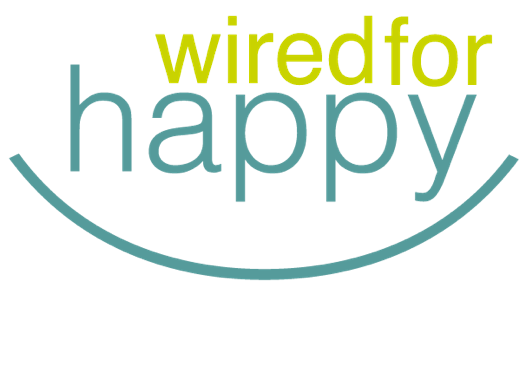“I can’t meditate, it completely stresses me out!”
“Deep-breathing doesn’t calm me.”
“I can’t stand yoga.”
A few common responses from many an anxious person, when advised of common practices to set the stage for inner peace.
While everyone is the expert on their own life, one can argue that anxiety-prone people do not always make the best choices for alleviating distressing emotions.
Which is ironic considering how incessant worriers are often highly responsible, dependable, and goal-oriented—the very model of discipline at work, at school and in the community.
Except when it comes to managing stress, tolerating frustration, and navigating psychological problems. Successful endeavors come with a price—namely endless hours wasted on indecision, self-doubt, and loathing.
What if you could achieve those goals in half the time, or less?
The purpose of this post is to help you focus that discipline which brings outward measures of success, so you can more efficiently manage your inner world.
But first, an important fact: Anxiety is predictable.
Sure, anxiety feels like a conspiracy theory against yourself or a road trip where you stop and examine all the times you messed up and what you should have done differently, but its patterns are foreseeable.
Here’s a breakdown of the typical anxiety cycle: A thought (or series of thoughts) leads to uncomfortable feelings, which then lead to unhealthy reactions or behaviors.
Stopping your racing thought process is not easy; however, the best way to get out of your head is to get into your body.
Deep-breathing is your ally here. Intentional slow breathing reduces heart rate, anxiety, and fear perception. When you focus on the rhythm of your breath as it enters your body and leaves your body, you are diverting focus from your thoughts. Counting can further distract you as you inhale for a count of three and exhale for a count of three (or whatever count series suits you).
The good news is slowing your mind and body helps you return to rational thinking mode, as you can’t have a rational thought with a hijacked central nervous system.
I’ve worked with enough anxious souls to know that many readers likely rolled their eyes at the “just breathe” suggestion. So if intentional focus on the breath is not your cup of chamomile then do whatever activity helps to calm your mind and body. By the way, if you’ve experienced labor and delivery or visited the hospital for a panic attack, think back to your doctor’s first directive…
Exactly: Breathe.
What to do when distressing thoughts are co-piloted by chronic indecision:
“Most people want to avoid pain, and discipline is usually painful.” —John C. Maxwell
1. Expect resistance. Even the most motivated individuals loathe certain tasks—the difference is they put their behind in the chair when it matters. Feeling less than confident about performance outcomes is normal, so avoid criticizing or analyzing your resistance. Instead, take a cleansing breath, roll up your sleeves and get to work.
2. Follow the calm script, not the negative voices in your head. Anxiety is an attentional issue. Namely, wp themes over-attention to worrisome thoughts and under-attention to your ability to problem solve. Rumination is the culprit, and the workaround, not surprisingly, is to get out of your head.
Reflect on your successes and imagine yourself accomplishing your goals quicker. Chances are you burned the midnight oil on several occasions which cost you precious hours of your life.
3. Get comfortable with action. A 2014 multi-university study surveyed nearly 4,000 participants from 19 countries on their mental health and their feelings about action versus inaction. The researchers found that anxious people predominantly expressed negative feelings toward action.
Other studies have focused on chronic procrastination as an emotional strategy for dealing with stress. Contrary to popular belief, chronic procrastination isn’t actually linked to perfectionism, but rather to impulsiveness, according to Piers Steel, researcher and author of The Procrastination Equation. (This post offers a wide range of actionable anxiety busters.)
4. Be mindful of “mindless candy.” Most of us robotically scroll social media or YouTube for entertainment. If you find yourself using distractions as avoidance, schedule short intervals of frivolity into your day to promote structure.
According to a study by the Information Overload Group, $588 billion is lost every year in U.S. business alone because of distractions. Further, in a study of 2,000 participants, employees on average lost nearly 800 hours in productivity due to interruptions.
5. Fire Dr. Google. The irony is you may have found this article through a search engine, however, the sheer amount of information at our fingertips can be downright overwhelming. For example, I recently googled “anxiety help” and got this: “About 530,000,000 results.” The bottom line is you don’t need more information, you need the right information. Chances are if the source comes from a professional, you’re on the right track.
article continues after advertisement
Speaking of interventions, psychotherapy is your best bet if you’re spending more hours than not in an anxious state. Online programs help, too, as guided information teaches you to execute a step-by-step plan to get on the right side of calm.
You’re not competing for a berth at the Anxiety Olympics so put your self-discipline to good use. Remember, resistance is normal; racing thoughts are not, choose to do differently in the face of uncertainty and execute your plan of action.
And don’t forget to breathe!
*****
For in-depth support for all things cool, calm and collected, check out Holistic Healing for Anxiety: A 28-day online course.
Article originally appeared on psychologytoday.com








